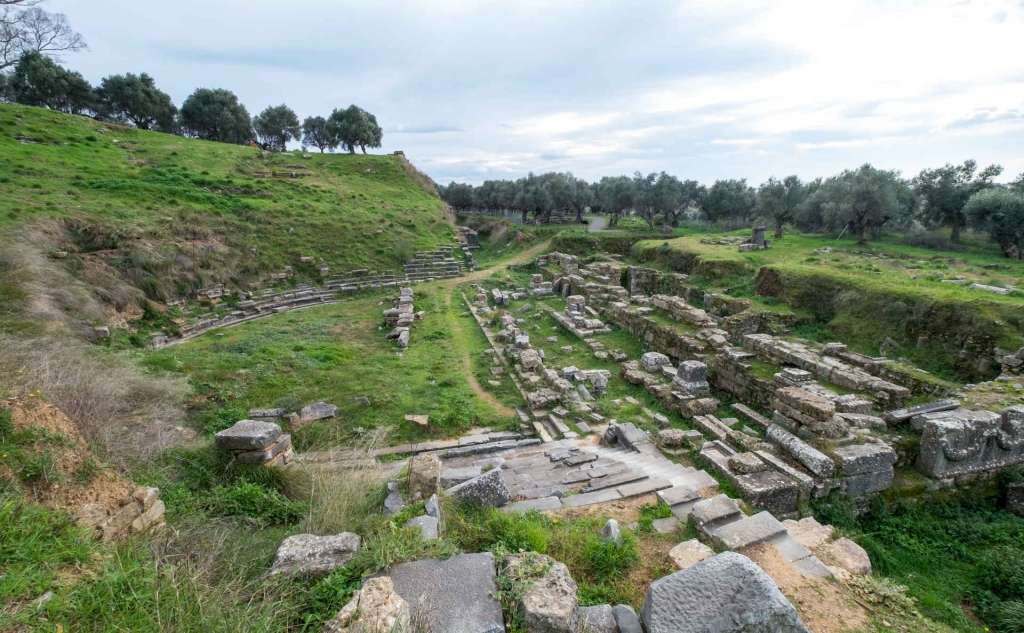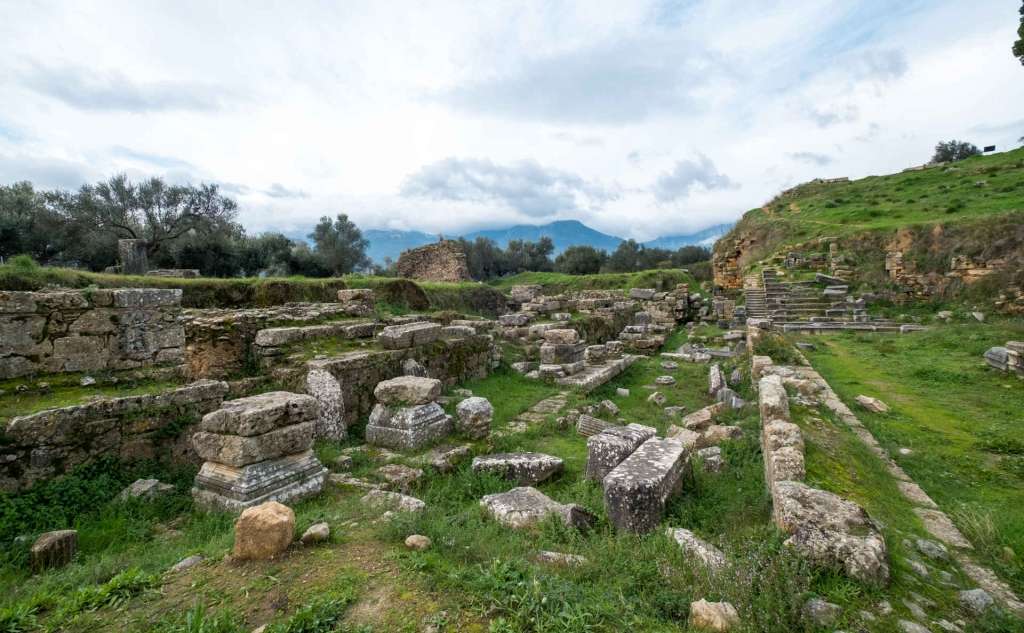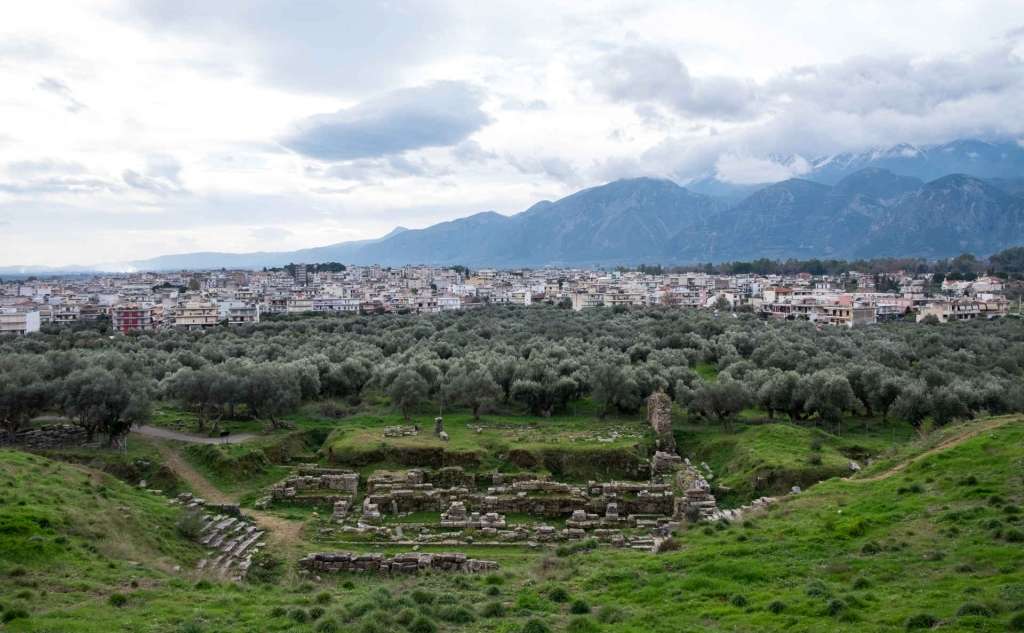Ancient Theatre of Sparta
The ancient theatre of Sparta is located on the southwestern slope of the acropolis of the homonymous ancient city. The theatre's existence dates back to the 5th century B.C, as described by ancient writers, such as Herodotus ("History", Book 6). From the archaeological findings, so far, it hasn’t been confirmed that the theatre of the Classical period was situated at the exact location that the visitor sees today.
The theatre's construction dates back to the transition from the Late Hellenistic Period to the Early Roman one, around 30-20 B.C. At the end of the 1st century A.D., the theatre acquired a steady two-storey marble Roman scene of Corinthian style as a gift from Emperor Vespasian. In its final form, the theatre was used till the 4th century A.D. After a long period of abandonment, a Byzantine settlement was developed in the area, dating between the 10th and 14th century A.D. The theatre has been systematically excavated by the British School of Archaeology, while the Greek Archaeological Service has also done some work during the 1960s and 1970s. Even today, the theatre has not been fully excavated.
The ancient theatre of Sparta is one of the largest in Greece, with a width of 140 meters. It doesn’t stand out only for its size but also the quality and luxury of its construction. It was made out of local white marble. The use of marble for a theatre of this scale is an innovation, not only for Sparta but for all Peloponnesian theatres in general. When Pausanias visited the theatre in 160 A.D., he was impressed and characterised it as "a theatre worthy of sight” (Greek Touring, III, 14.1). A remarkable feature is the stage which was not permanent; it was a mobile one. It was wooden, moved on wheels, and kept in a building on the west side of the "scenic”. The concave part was spacious, and it could hold up to 17,000 spectators (as the Epidaurus theatre). It had nine tribunes with 32 rows of seats in the lower concave part and sixteen with 17 rows of seats in the upper concave part, while the orchestra was horseshoe-shaped.
Besides other events, the dances of naked young men were carried out at the theatre, possibly, in memory of the dead warriors at the battle of Thermopylae in 480 B.C. Also, the athletic contest of the sphere used to take place at the theatre, symbolising the transition from adolescence to manhood.






